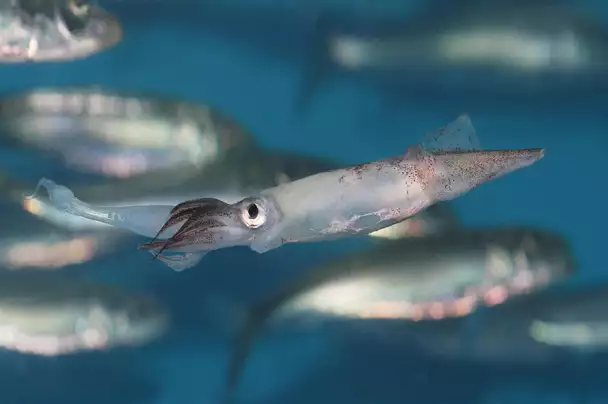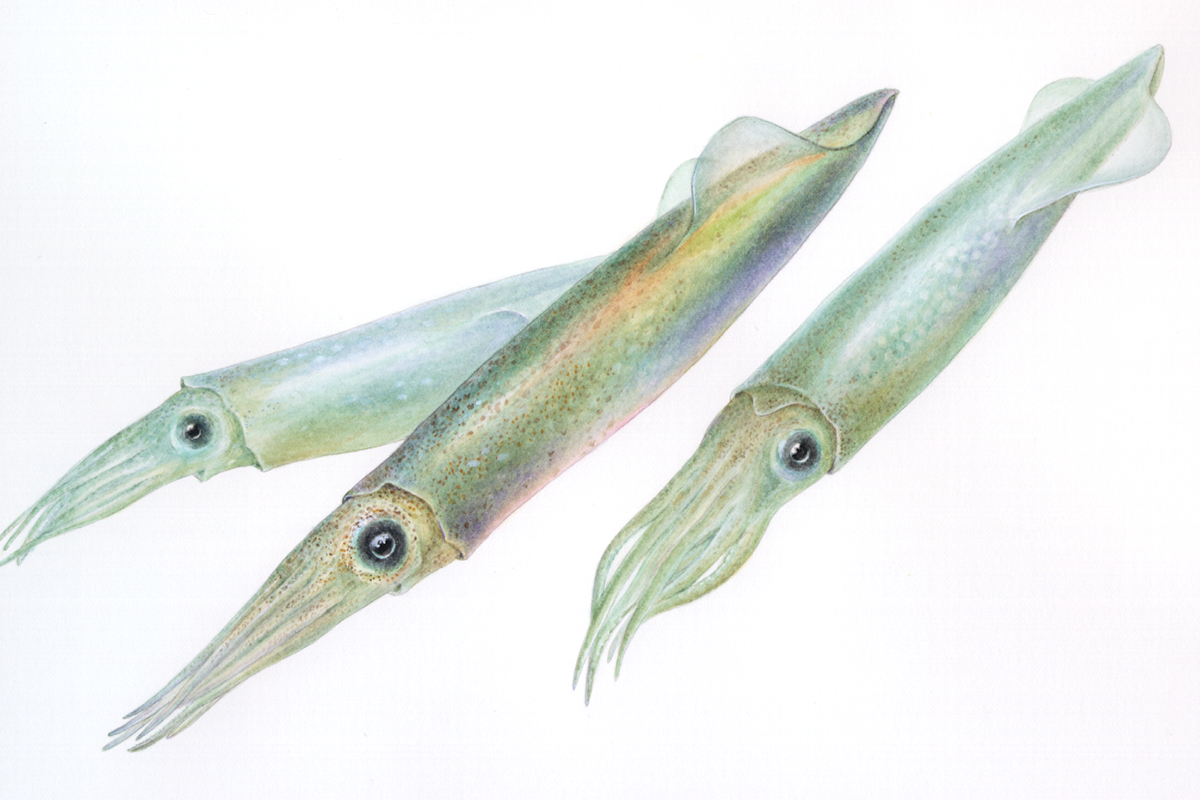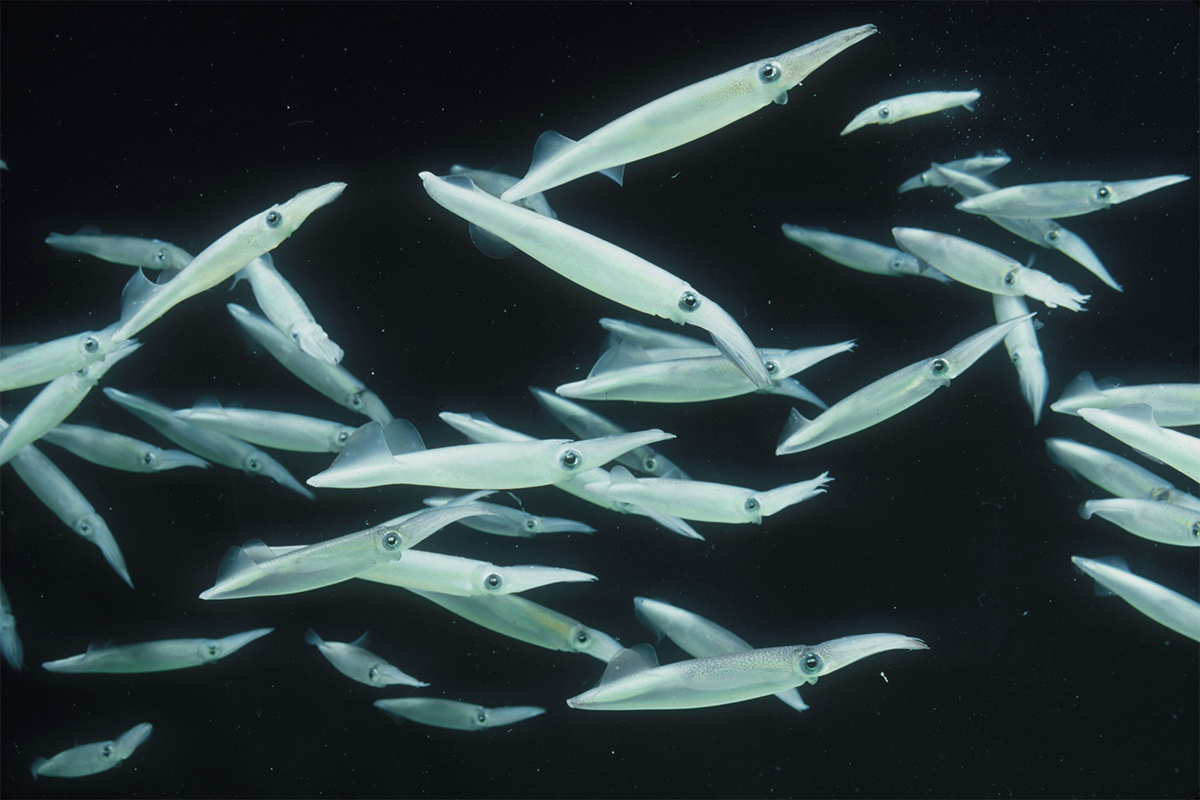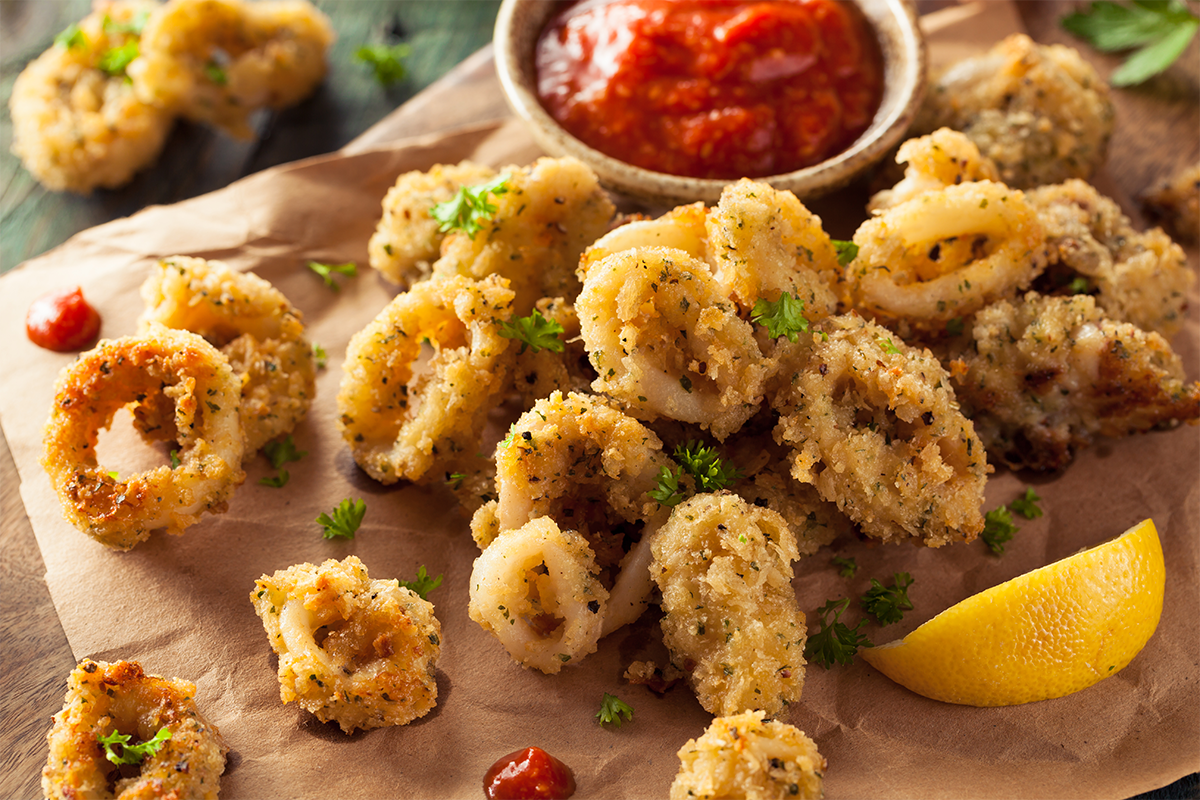Seeing green with California market squid
Originally published in Monterey Bay Aquarium Seafood Watch

California’s largest fishery is rated Best Choice
Dig into that calamari with confidence. California market squid remains a Best Choice, but managing the state’s biggest fishery sustainably comes with its fair share of complexities. Learn how managers are helping limit by catch and adapting to manage a climate-sensitive species in a changing world.
Picture this: you’re sitting seaside in Monterey, about to order calamari at your favorite restaurant when you notice fishing boats on the water. What are they fishing for? If it’s spring, chances are it’s squid. You wonder, is that fried squid on your plate sustainable? If it’s California market squid, the answer is yes! In June 2023, we released an updated assessment of California market squid (Doryteuthis opalescens, formerly Loligo opalescens). Last assessed in 2019, California market squid remains a Best Choice. Read on to learn more about the complexities of sustainably managing the largest fishery in the state.
The squid basics
Market squid live in coastal waters and rely on highly productive ecosystems, such as the U.S. West Coast. Given their complex biological needs, market squid are only harvested from wild fisheries, not farmed through aquaculture. Like most squids, market squid have short life spans. They live about a year, spawn, and then die.
Market squid can be found from Mexico all the way to Alaska, with the majority of fishery landings coming from southern and central California. Fishers use purse seines to catch market squid, both during the day and at night. Bright lights are used at night to lure squid to the surface.

Seeing green — in more ways than one
Market squid is the largest fishery in the state of California — both in terms of catch volume and revenue — and is very important to the state’s economy. This fishery brought in over 57,000 metric tons in 2021, representing 66 percent of all landings across California ports. In 2022, it brought in 141 million pounds (about 64,000 metric tons), worth $84 million. Since 2000, market squid has brought in more revenue than Pacific mackerel, jack mackerel, northern anchovy, and Pacific sardine combined.
A majority of this squid is exported to Asia, with over 80 percent heading to China. Some of that is processed overseas and then re-imported to the U.S., where you can find it in restaurants as popular seafood items like calamari.
“From an economic standpoint, it’s pretty consistently the most important fishery in California,” said Eva May, Seafood Watch fisheries scientist. “It brings in the most revenue and has the highest volume of landings. In terms of the jobs it creates in central and southern California and the revenue it brings into the state, it’s important.”
Bye-bye bycatch
A major component of our standards is the impacts a fishery has on other species, including bycatch levels. Bycatch is when other species are accidentally caught while fishing.
“Bycatch numbers in this fishery are really good and kept to a minimum,” May said.
Where bycatch does occur, it’s usually species that school with market squid, like sardine and mackerel. Data show that bycatch of larger species may occasionally occur, but this happens at low enough levels it doesn’t impact species population numbers.
Lights used to bring squid to the surface during nighttime fishing can sometimes also attract seabirds, but this fishery uses modifications to help protect them. For example, the use of attracting lights is prohibited in the Greater Farallones National Marine Sanctuary to protect seabirds. In other areas where lights are allowed, they are limited to 30 kilowatts and must have shields on them. These modifications make it so the lights are only visible underwater; seabirds can’t see them from above, so they aren’t drawn in.
Sea lions and other marine mammals can also be attracted to the squid caught in nets. The government has approved the use of acoustic devices to help deter marine mammals from the area where fishing is taking place.

Collaborating on science-based management
Strong management of fisheries doesn’t happen by accident. It takes effort and a lot of cooperation.
The California Department of Fish and Wildlife is the lead management agency for California market squid and coordinates with federal advisory bodies and other agencies to set management guidelines and regulations. The regulations prevent fishing during spawning periods, set strict catch limits, and require monitoring by scientists to keep the population at healthy levels.
“It’s important for the public to know that there is a lot of collaboration between the government, scientists, and the industry,” May said.
Part of this management includes updating management plans to include the latest science and input from stakeholders.
“The market squid fishery is critical to the livelihoods of our fishermen and processors. The California Department of Fish and Wildlife has developed an effective management structure, and our industry remains committed to continuing our research efforts and working with the State to maintain this sustainable fishery.”
– Mark Fina
Executive director of the California Wetfish Producers Association
“The market squid fishery is critical to the livelihoods of our fishermen and processors. The California Department of Fish and Wildlife has developed an effective management structure, and our industry remains committed to continuing our research efforts and working with the state to maintain this sustainable fishery,” said Mark Fina, executive director of the California Wetfish Producers Association. “We’re thrilled that the Seafood Watch program has recognized these efforts by assigning the fishery its Best Choice green rating.”
The fishery management plan for market squid was originally developed in 2005 and involved input from stakeholders. It is currently undergoing review and will be completed in 2024.
Managing squid in a changing climate
Climate change presents wildlife managers with a whole host of new challenges and questions. Squid is no exception.
Market squid are sensitive to oceanic and climatic conditions, and its populations tend to fluctuate alongside other major oceanic temperature fluctuations, such as El Nino-Southern Oscillation (ENSO), May said. Because we already see market squid population fluctuations due to ENSO, we may see even bigger shifts based on climate impacts, or we may see the fishery moving farther north because of warming waters.
Currently, California fishery managers and federal counterparts are working together to incorporate the latest climate data and position this fishery for sustainability in the future.
A green rating for California’s biggest fishery
We’re not squid-ing: California market squid is rated a green Best Choice. It serves as a prime example of a fishery that is both environmentally sustainable and economically powerful.
So go ahead, dig into that (California) calamari with confidence.



